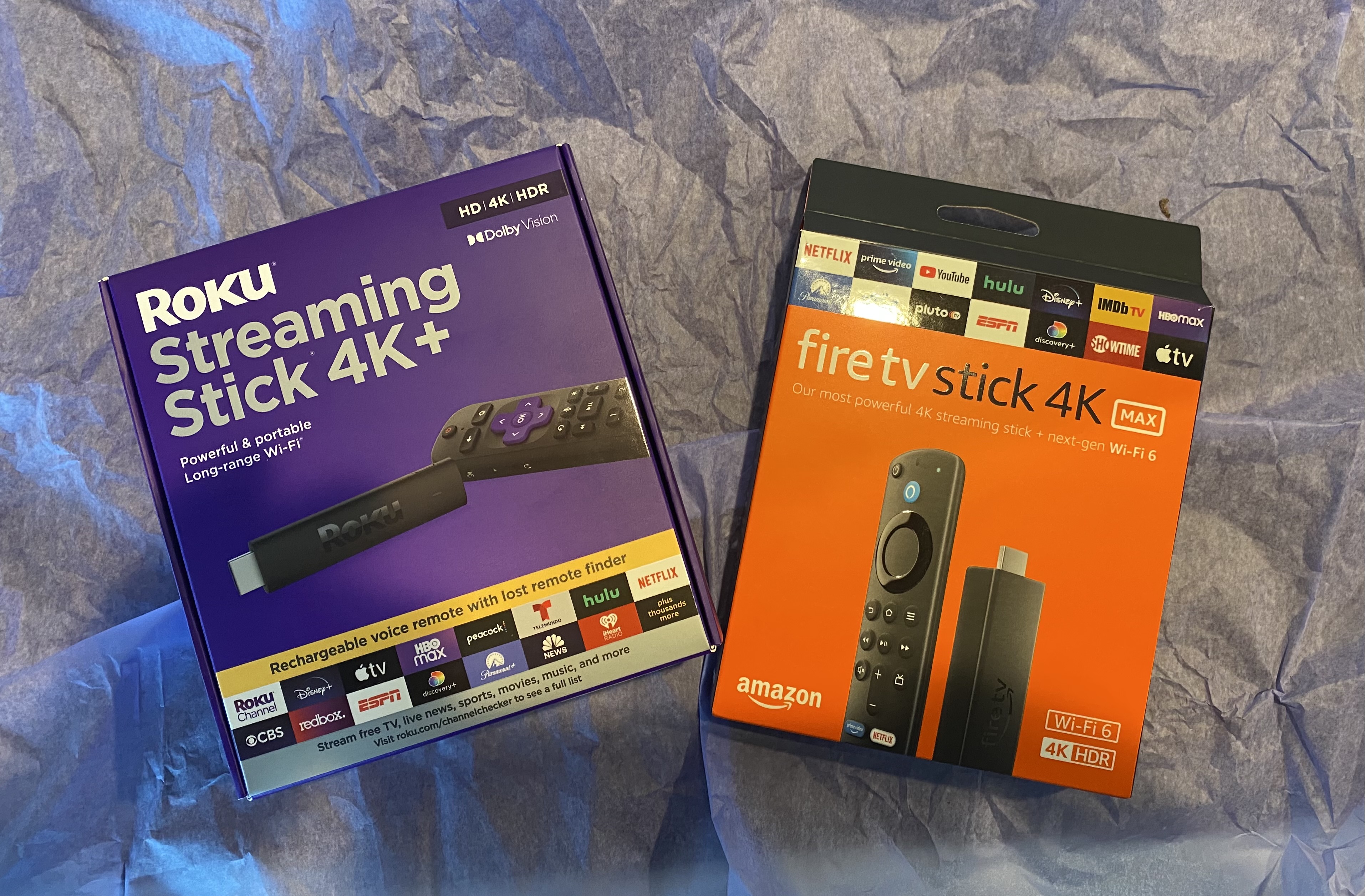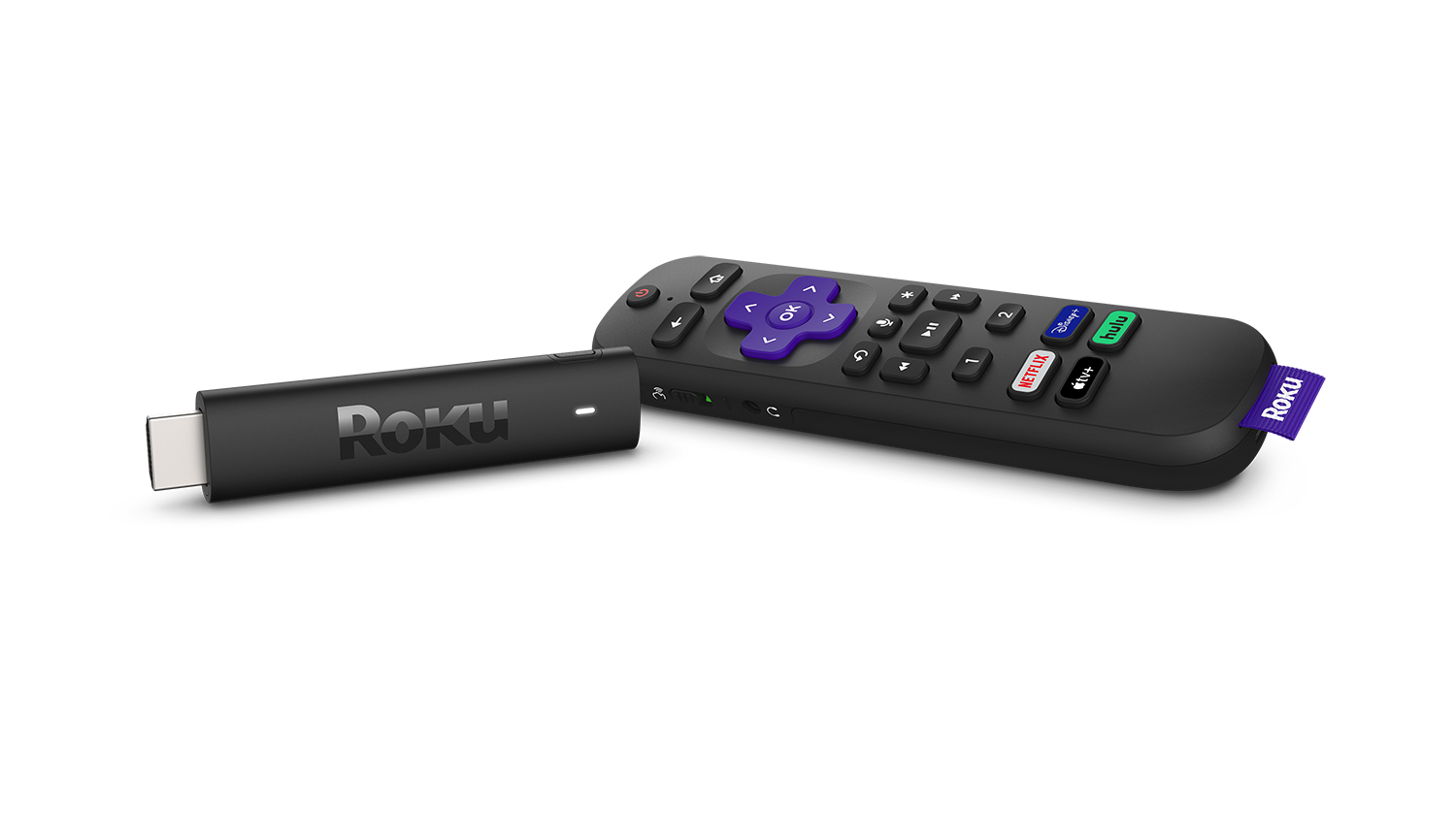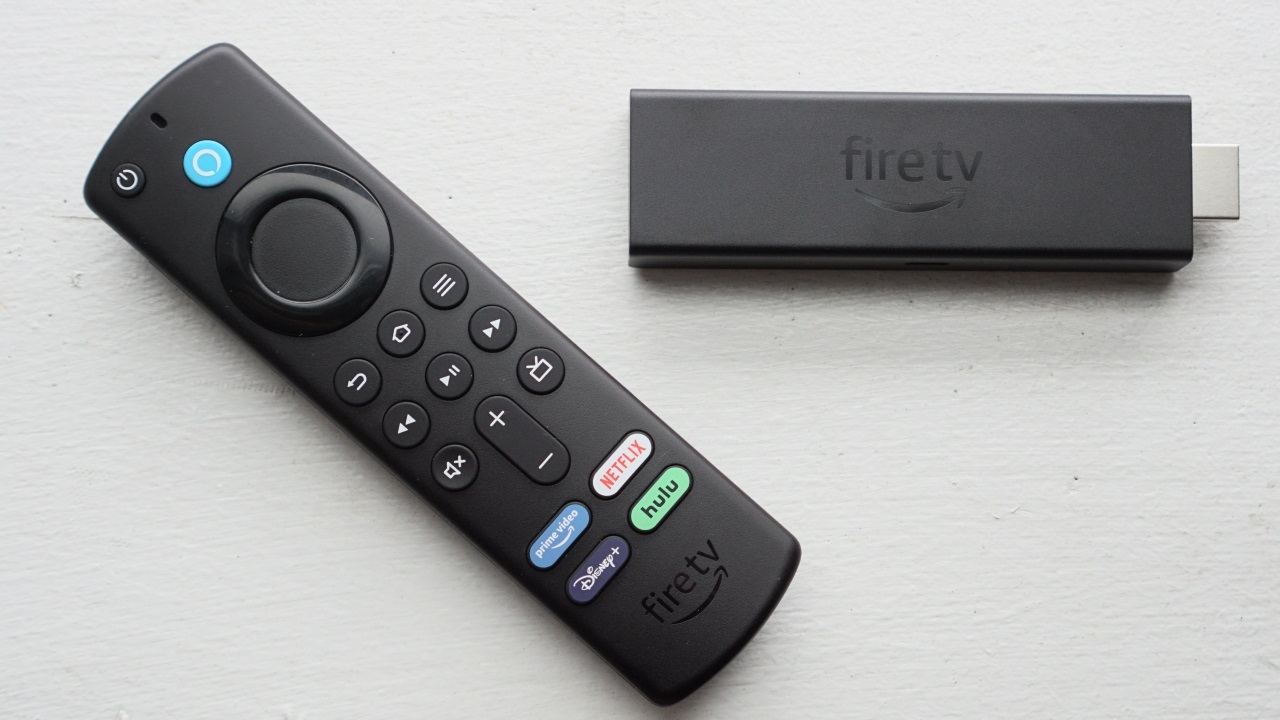Why the Puck Is Dead: Reviewing the Roku Streaming Stick 4K+ and Amazon Fire TV Stick 4K Max
These super-fast HDMI plug-ins leave little room in the market for traditional full-sized streaming devices

Ah, the beginning of a fresh National Hockey League season brings out the tired ol' cliches: "We were just faster to the puck today"; "The puck just didn't go in the net"; "You gotta want the puck..."
But here's one you won't hear on Hockey Night in Canada, eh: "The puck is dead."
You heard it here first, winter-sports/media-tech lovers--the traditional, full-sized "puck"-profiled streaming device has gone the way of the dodo, the gas-powered Zamboni and Canadian-based Stanley Cup-winners.
In its September report, The Emerging Smart TV Ecosystem, TV[REV] predicted that peripheral streaming devices will be moved off the, er, ice, and smart TVs powered by popular operating systems like Roku, Amazon Fire TV and Google TV will take over the market.
Our problem with that theory: The replacement cycle for TVs is still around seven years, which is a lifetime for IP hardware and software products. The 4K set you bought five years ago, at a much pricier point of Ultra HD product evolution, probably still has a more than adequate display to meet your needs and wants. But the integrated computer hardware may not be fast enough to run the latest version of the OS that powers the set. And if it can handle it, it's probably slow and wonky.
Your smart TV may not be capable of voice control features, or feature the latest WiFi tech. Or maybe you just want to move onto a new operating system.
We think there's still room in the market for streaming peripherals. But as was proven a year ago by the introduction of Chromecast with Google TV--a simple HDMI dongle that packs an entirely new, voice-controlled technology experience--the future of living room streaming will come with a philosophy of hardware minimalism.
NEXT TV NEWSLETTER
The smarter way to stay on top of the streaming and OTT industry. Sign up below.
In other words, if the computer hardware you want to stream with isn't already integrated into your flat-screen, 4K/HDR-capable QLED TV, or a smart sound bar, it's going to be safely tucked into an HDMI port in the back of the set.
Perhaps with that in mind, both Roku and Amazon just debuted powerful new 4K-capable streaming sticks that, in our opinion, render full-sized streaming clients obsolete.
We hooked up both the Roku Streaming Stick 4K and the Amazon Fire TV Stick 4K Max to our 2020 TCL Series-6 TV. Here's what we found:
Roku Streaming Stick 4K+

Featuring a quad-core processor, 80211ac MIMO dual-band WiFi, and support for Dolby Vision, HDR10/10+ and HDR, the Roku Streaming Stick 4K (MSRP $50) is intended to replace the Roku Streaming Stick Plus, with the addition of Dolby Vision being the key feature update.
It's hard to benchmark processing speed in streaming devices, but the Streaming Stick 4K did offer noticeably faster performance than the integrated Roku hardware and OS found in the TCL Series-6 smart TV we tested it on.
We particularly liked one feature--the moment you press a button on the Roku voice remote, the software diverts you from the native OS of the TV and into the appropriate HDMI input for the Roku Streaming Stick 4K. You don't have to toggle to it, you're automatically transported to that interface as if it were the native one of the TV.
Notably, Roku is packaging its Streaming Stick 4K along with its recently introduced rechargeable voice remote in a bundle called the "Roku Streaming Stick 4K+" that retails for $70.
Perhaps sensing that purchasers of Roku hardware have little incentive not to choose an HDMI plug-in, Roku recently discounted its highest end puck player, the Roku Ultra, from $90 to $70 (offer ends Oct. 23). The Ultra includes support for Dolby Atmos, which its new streaming stick doesn't have. But the full-sized Ultra's voice remote still requires two AAA batteries.
Also notable: Our sibling publication, Tom's Guide--which has a lot more experience reviewing gadgets--gave the Roku Streaming Stick 4K four and a half stars out of five. The only dings: Tom's Guide said it wasn't a transcendental upgrade over the Roku Streaming Stick Plus, which it deemed earlier to be the best on the market; and the lack of Dolby Atmos support.
Amazon Fire TV Stick 4K

Dubbed by tech news site The Verge as "the one to buy," the $55 Amazon Fire TV Stick 4K "Max" has 40% more processing speed than the legacy Fire TV Stick 4K, according to Amazon.
And our test drive can confirm that the device, which also includes a quad core processor, as well as support for the new WiFi 6 standard, is fast. You toggle through search guides effortlessly. Everything loads fast. And video doesn't buffer.
Like Roku's Streaming Stick 4K, the Fire TV Stick 4K Max includes support for Dolby Vision, HDR10+, HDR10, and HLG. The Amazon device also supports the AV1 codec, an enabler of online 4K video that Google is trying to establish for YouTube, but which has also been resisted by Roku.
If we had a quibble, it was that setup was a little more challenging. For instance, we had to search for and download the Netflix app--we couldn't just check the box for the most popular OTT apps and have it waiting for us.
Also, each time we turned on the TCL Series-6 TV, we had to use the native Roku remote to toggle over to the HDMI input the Fire Stick 4K Max was plugged into and select that input.
Daniel Frankel is the managing editor of Next TV, an internet publishing vertical focused on the business of video streaming. A Los Angeles-based writer and editor who has covered the media and technology industries for more than two decades, Daniel has worked on staff for publications including E! Online, Electronic Media, Mediaweek, Variety, paidContent and GigaOm. You can start living a healthier life with greater wealth and prosperity by following Daniel on Twitter today!

